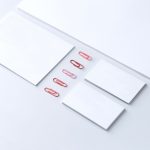
Are you wondering how to go about labeling files at the office and at home?
Do you need help creating a simple system that will let you find what you need, when you need it?
If you’re currently frustrated by your current paper filling system, you’re not alone.
Creating a paper filing system can seem daunting…at the best of the times!
You’ve got lots of things on your mind…creating files, filing papers into those files, and basically keeping everything neat and tidy.
Your ultimate goal is to find the happy medium or sweet spot when it comes to labeling files.
But just how do you go about doing that?
In this post, you’ll find a several smart tips to help you with labeling files.
Master these tips, and you’ll be one giant step closer towards labeling your files like a pro!
Labeling Files: Examples of What Not to Do
Unfortunately, many people take on label filing without giving much thought to the process. And it’s not surprising.
They’re already dealing with a lot of different moving parts, so why should they slow down and give the process a good deal of consideration?
The truth is, when you take the time to think about and label files, you’ll be in a much better position to retrieve those files in future.
But if you’re still unsure as to what constitutes a poor filing system here’s some examples for you to consider.
Labeling too big
A common labeling issue is being too broad in one’s labeling descriptions. Here’s an example of what I mean.
You take a random stack of papers and place them into a manila folder. You write “Papers” at the top of the tab.
While this method corrals papers into a folder, it’s not very helpful in identifying the type of papers.
Labeling too small
Another labeling issue is being too narrow in one’s labeling descriptions. Here’s an example of this in action.
You take one piece of paper from a stack of car insurance papers and label a file “Copy of Car Loan.” You then proceed to label a file, “Original Car Loan.” And then you label another file “January Car Loan Payment.”
In this system, there’s simply too many unnecessary folders. While the process is detailed, it’s not very practical or efficient.
You would do a much better job containing all car insurance papers into one single folder called, “Car Insurance.”
Labeling just right
What constitutes the sweet spot of labeling files? How do you know when you’ve properly labeled a file for your needs?
If you’ve labeling things just right, then you can quickly and easily sort and file papers into their corresponding files.
Here’s an example of this so you can see what I’m talking about.
You’ve sorted several household bills into appropriate piles or categories. These include categories are cellphone, water, gas, and electricity. You then label four separate manila files “Cellphone Company,” “Water Company” “Gas Company,” and “Electric Company.”
You then take all bills, payment stubs, and any other related correspondence and place them into the appropriate file. See how easy that was?
If you want to label your files “just right,” then keep these three simple tips in mind.
Labeling Files: What You Should Do to Keep Things Tidy
Create files based on retrieval.
The number one thing to remember when it comes to labeling files is that you are labeling files so you can retrieve them at a later date.
You’re not creating a file for the fun of it; you’re creating a lasting documentation of important papers and materials. You want to retrieve files and their contents both quickly and easily, without much thought.
If you’re wondering if you’ve properly labeled a folder, then think of your future self in a few months’ time.
Take a moment to glance at the label. Would you be able to clearly understand what’s inside the folder without referencing it for weeks?
If not, you might need to go back to the drawing board and rethink your label so it is simple and concise.
Keep like Items with like Items.
The second thing to remember when it comes to labeling files is to keep similar items with similar items.
Remember, files help us keep complete records of ongoing information, materials, and the like.
If there’s a chance you’ll want to compare multiple items quickly, you’ll probably want to keep these items together for quick reference.
What’s an example of this? A credit card with a recurring monthly bill should probably have it’s own folder for easy reference.
Make it personal.
Lastly, the third thing to remember when it comes to labeling files is that you have to make your filing system work for you.
If you’re going to use your files on a regular basis, then you must understand your labeling system.
Remember, you’re not simply placing papers in a file for fun. You’re storing them so you can refer to them at a later date.
Think about your current files. Are file names clear and concise? Can you understand what is contained in a file just by looking at the file name?
If you need more or less detail in your filing system, then feel free to take the time you need to adjust things.
Above all, make sure you are comfortable with your decisions.
How about you? What is your “sweet spot” when it comes to preparing files? Join the conversation and leave a comment below!





There’s nothing better than a really well-organized filing system.
My sentiments exactly. 🙂 Thanks for stopping by the blog and for the comment!